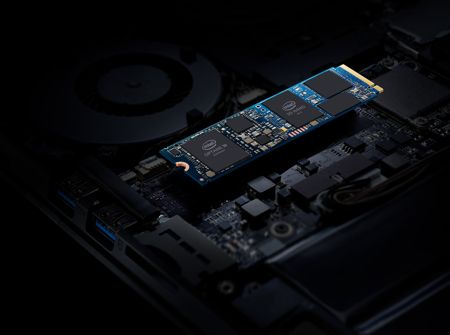Intel Builds 10 Million QLC 3D NAND SSDs
Since late 2018, and based upon QLC NAND die built in Dalian, China
This is a Press Release edited by StorageNewsletter.com on February 28, 2020 at 2:24 pmIntel Corporation, in April 2019 introduced Intel Optane memory H10 with solid-state storage. The device combines the responsiveness of its Optane technology with the storage capacity of its QLC 3D NAND technology in M.2 form factor.

Last week, Intel’s memory and storage group produced its QLC 3D NAND SSD number 10 million based upon the QLC NAND die built in Dalian, China. Production began in late 2018, and this milestone establishes QLC as a technology for high-capacity drives.
“Many have talked about QLC technology, but Intel has shipped it, and at scale,” said Dave Lundell, director of client SSD strategic planning and product marketing, Intel. “We have seen strong demand for the cost-effective capacity of our standalone QLC SSD (Intel SSD 660p) and the performance of our Optane Technology + QLC solution (Intel Optane Memory H10).“
Few facts related to the achievement:
- Intel QLC 3D NAND is used in the Intel SSD 660p, Intel SSD 665pand Intel Optane Memory H10 storage solutions.
- These QLC drive has 4 bits per cell and stores data in both 64-layer and 96-layer NAND configurations.
- The firm has been developing this technology over the past decade. In 2016, its engineers changed the orientation of the already-proven floating gate (FG) technology to vertical and wrapped it into a gate all-around structure. The resulting TLC technology could store 384Gb/die. In 2018, 3D QLC flash became a reality, featuring 64 layers with 4 bits per cell, capable of storing a 1,024Gb/die. In 2019 Intel moved to 96 layers, reducing overall areal density.
- QLC is part of Intel’s overall storage portfolio, which includes both client and data center products.
Media coverage of the landmark includes a report from Nathan Kirsch in Legit Reviews: “That is a pretty astonishing feat and it just goes to show that QLC has done rather well since it was brought to market.“
And a YouTube podcast from StorageReview, where editor Brian Beeler says: “[Intel] has some momentum around its success with QLC.“













 Subscribe to our free daily newsletter
Subscribe to our free daily newsletter


